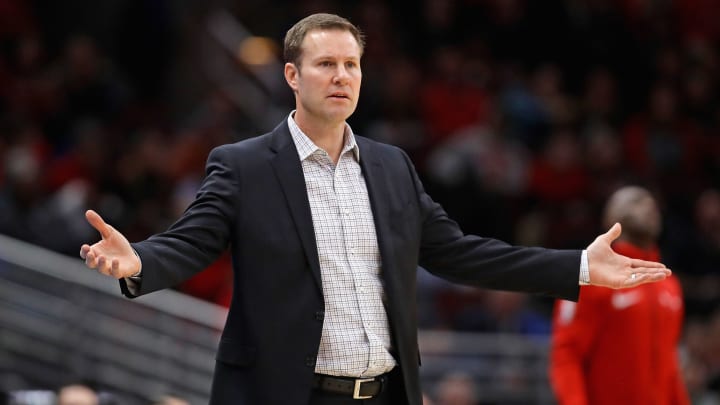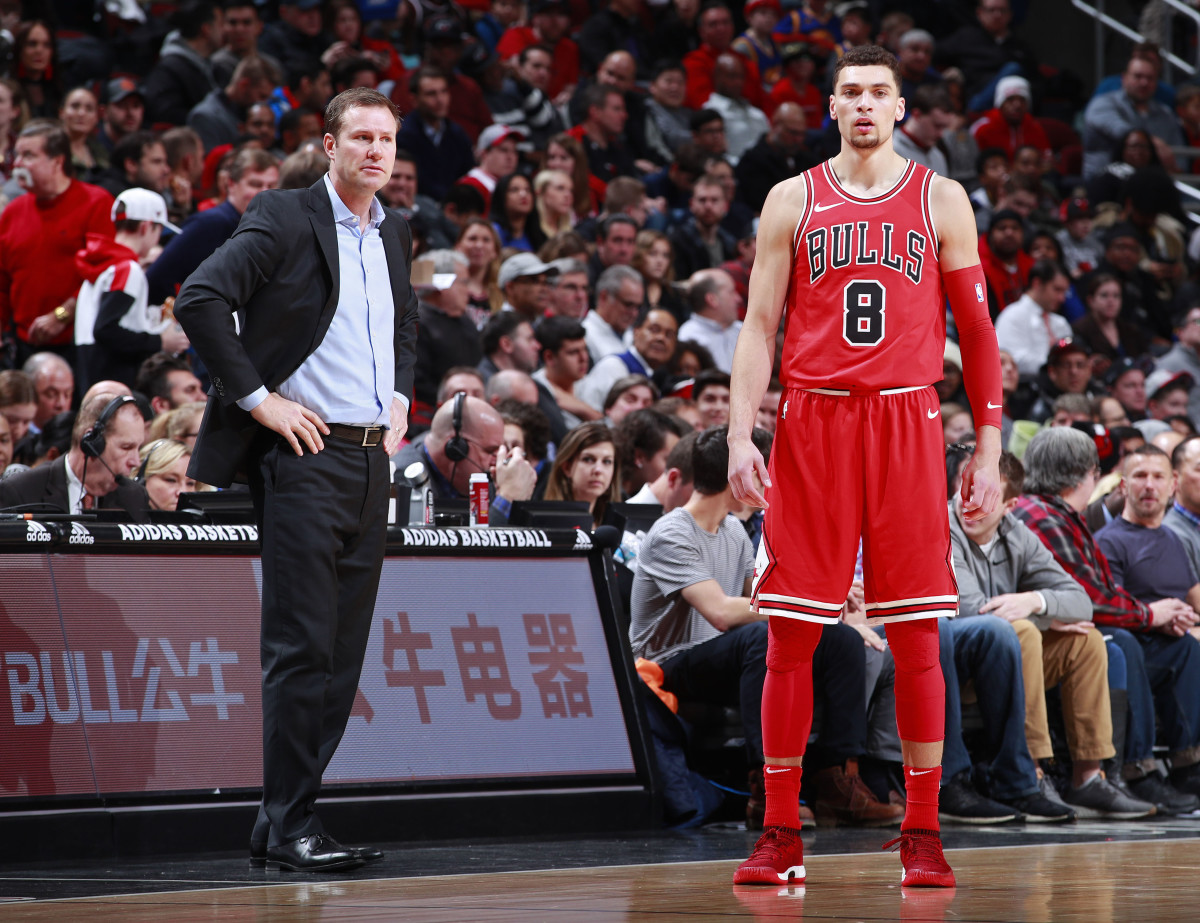Is the 2018-19 NBA Season the Year Fred Hoiberg and the Bulls Meet Expectations?

The NBA is a copycat society influenced by a seemingly infinite flow of offensive output. Patterns across the league exhibit teams preferring the three-ball and increasing offensive possessions. The Houston Rockets, who lead the NBA in three-point attempts per game, and finished top five in pace saw those marksshattered a year ago.
Whether by artillery bombardment of long-balls at the rim (Houston), the dexterity of ball movement and misdirection for high percentage shots (San Antonio), or employing a high dose of off-ball screens for great shooters (Golden State), teams across the association are attempting to join in on the phenomenon.
Insert Fred Hoiberg and the Bulls as the latest to consider themselves ready to enter the club. You know that one friend that’s makes the effort to look and dress the part to get in the club but cannot seem to figure out the combinations to pass the dress code? That’s been the bane of the Bulls organization for the better part of the last three seasons.
Hired in 2015, Hoiberg was the antithesis to his defensive-minded predecessor, Tom Thibodeau. Expectations teetered on the former Iowa State Cyclone bringing his modern pace and space style to the Windy City and rightfully so.
Over five seasons as head coach at Iowa State, Hoiberg revamped a dormant Cyclones program into a two-time Big 12 Tournament champion, made four NCAA tournament appearances and compiled a 115–56 (.673 record). An impressive run that ultimately led the Bulls front office to launch the Hoiberg era.
Unfortunately, hope turned to skepticism. Entering training camp, in 2015, the driver of his new offense, Derrick Rose, suffered an orbital fracture during the first practice that sidelined him for two weeks as Hoiberg’s system was being installed. It was a situation that Hoiberg remembered all too well. To make matters worse, a string of injuries to starters Jimmy Butler (15 games), Joakim Noah (53 games), Pau Gasol (10 games) and Mike Dunleavy (51 games) and key role players during the season prevented the Bulls from finding any rhythm.

“It’s tough you know,” Hoiberg said of his first season. “There was a lot of adversity that we hit that year, we had some good moments early. We got above [.500] sometime in January. At the end of the day we just weren’t there [healthy] enough to hit the expectations.”
As any coach in the NBA would know, it’s difficult to accomplish your goals when missing key components of your roster during important stretches. Perhaps it would be simple for Hoiberg to list reasons the team “underachieved” those first three seasons (He remembers everything), but he won’t bring himself to make excuses. Not for inheriting a roster that contradicted his up-tempo style, the year-to-year roster turnover, or the three alphas experiment that staved off an overdue rebuild.
Grades: We've Seen the Bulls' Predictable Jabari Parker Signing Before
“That year [2016–17] was a completely different dynamic with Wade and Rajon Rondo. I thought we were playing as well as anyone in the East at the end of the season. Unfortunately, [we] couldn’t get through that first round after winning two road games early on,” he said.
Despite opposing views on system and coaching styles former Bulls All-Star Jimmy Butler, Hoiberg did what every coach should: adapt to the personnel. Regardless of outside criticisms and what could have been perceived as internal distractions, Hoiberg pushed ahead. Things seemed to take a turn once GarPax hit reset during the summer of 2017 with the additions of No. 7 overall pick Lauri Markkanen along with young unproven players in Kris Dunn and Zach LaVine.
Although relatively limited the offense finally showcased its potential of what Hoiberg wanted to accomplish all along. From Dec. 8 to Jan. 20 the Bulls went 15–8, placing third in pace, fourth in assists, second in made three-pointers, three-point percentage, and playing at the fastest speed offensively in the league. A mark they would hold all year long. As seasons end, Chicago was able to remain positive regarding their finishes in pace, three-point makes and assists leaguewide.
A young roster that was counted out to begin the season, exhibited the ball movement, speed and spacing for open looks and rim attacks that Hoiberg aimed to execute since year one. The plays didn’t always translate to wins, but the season offered a peak into what the future holds while allowing skill development for guys critical to the organizations future. A trend that Hoiberg is keeping tabs on.
Kevin Knox, Wendell Carter Jr. and Midsummer Hope for the Knicks and Bulls
“You look at our guys numbers, I think all but one of our players last year had a career year when you look at their per 36 minutes,” he said. “I think the way we had that stretch last season and did a relatively good job on taking care of the ball with the pace. If we could carry some of those things over, we’re going to have a chance this year.”
Chicago should be a place for optimism at the moment. The team had huge developments for unproven guys in Dunn, Portis and Valentine. Markkanen even showed he will be a force to be reckoned with. Wendell Carter Jr’s summer league play had him looking every bit the part of a perfect pairing alongside Markkanen. Versatile wings in Jabari Parker, Chandler Hutchinson and LaVine will allow the Bulls to play big, small and fast while potentially being a nightmare to guard.
In spite of that, pessimism remains from those outside the organization. Some predictions have the Bulls projected as a 28-win team. Others at merely 41. Understandably so, but it’s all the fuel Hoiberg needs to project on his young roster.
“The experts that throw the expectations out there, the numbers [win totals], aren’t real high,” he said. “You’ve got to use that as motivation and go out there and prove people wrong.”
